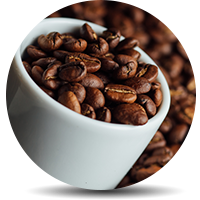

gastrointestinal disturbance (upset tummy, diarrhea)Įven if you don’t experience a caffeine overdose, just consuming small doss of caffeine can have negative effects.Caffeine Overdose SymptomsĪccording to the official DSM-5 Criteria, an official diagnosis of caffeine overdose (called “caffeine intoxication”) is made when any five of the following symptoms are present: Someone would need to have roughly 50–100 ordinary cups of coffee to reach a lethal dose and have a true caffeine overdose. To put that into context, one cup of coffee contains 80–175 milligrams of caffeine depending on the bean and preparation method. Some people feel fine, or their perceived “normal,” drinking around 500 milligrams, while others feel sick and weak very quickly.Ĭaffeine is classified by the Food and Drug Administration as “generally recognized as safe.” Toxic doses are usually considered anything over 10 grams per day for an adult. While it depends a lot on the person, a dose as little as 500 milligrams of caffeine and up could potentially produce some symptoms of caffeine overdose. How much caffeine does it take to become dangerous and possibly lead to caffeine overdose? Most experts recommend no more than 200 milligrams daily during pregnancy from drinks and foods combined. This “safe” amount of caffeine content is equal to just over a little more than one grande Starbucks coffee (which has about 360 milligrams).įor pregnant women, the amount of caffeine recommended or tolerated is less. For example, when it comes to coffee, some sources define it as drinking more than eight to 10 eight-ounce cups in one day, but for some people, much less than this can have similar effects.Ī “moderate amount” of coffee for healthy adults that is correlated with health benefits maxes out at about 400 to 500 milligrams of caffeine per day, which is about five cups of home-brewed, regular coffee.

What qualifies as “excessive intake” of caffeine varies depending on whom you ask and the person’s individual tolerance. Read ingredient labels if you’re concerned about your intake, and look out for cocoa, kola nuts, and caffeine or green tea extracts. Some new food items hitting the market also contain caffeine, such as energy bars, balls and similar items geared toward increasing focus. White, Jasmine, Oolong Tea: 25 milligramsĬhocolate naturally contains some, especially dark chocolate.Starbucks 16 ounce Decaf Coffee: 25 milligrams.Starbucks 16 ounce Iced Espresso or Cappuccino: 225 milligrams.Starbucks Bottled Frappachino: 90 milligrams.Mountain Dew Soda 12 ounce: 55 milligrams.Pepper (or Diet Varieties) 12 ounce: 45 milligrams McDonald’s 16-ounce Ice Tea: 100 milligrams.McDonald’s 16-ounce Ice Coffee: 200 milligrams.In fact, it’s the second-leading beverage worldwide next to plain water! Other caffeinated drinks include: The most commonly consumed caffeine drink in the world is coffee.
/closeup-coffee-beans-543525262-579791c85f9b58461f1d44a6.jpg)


 0 kommentar(er)
0 kommentar(er)
